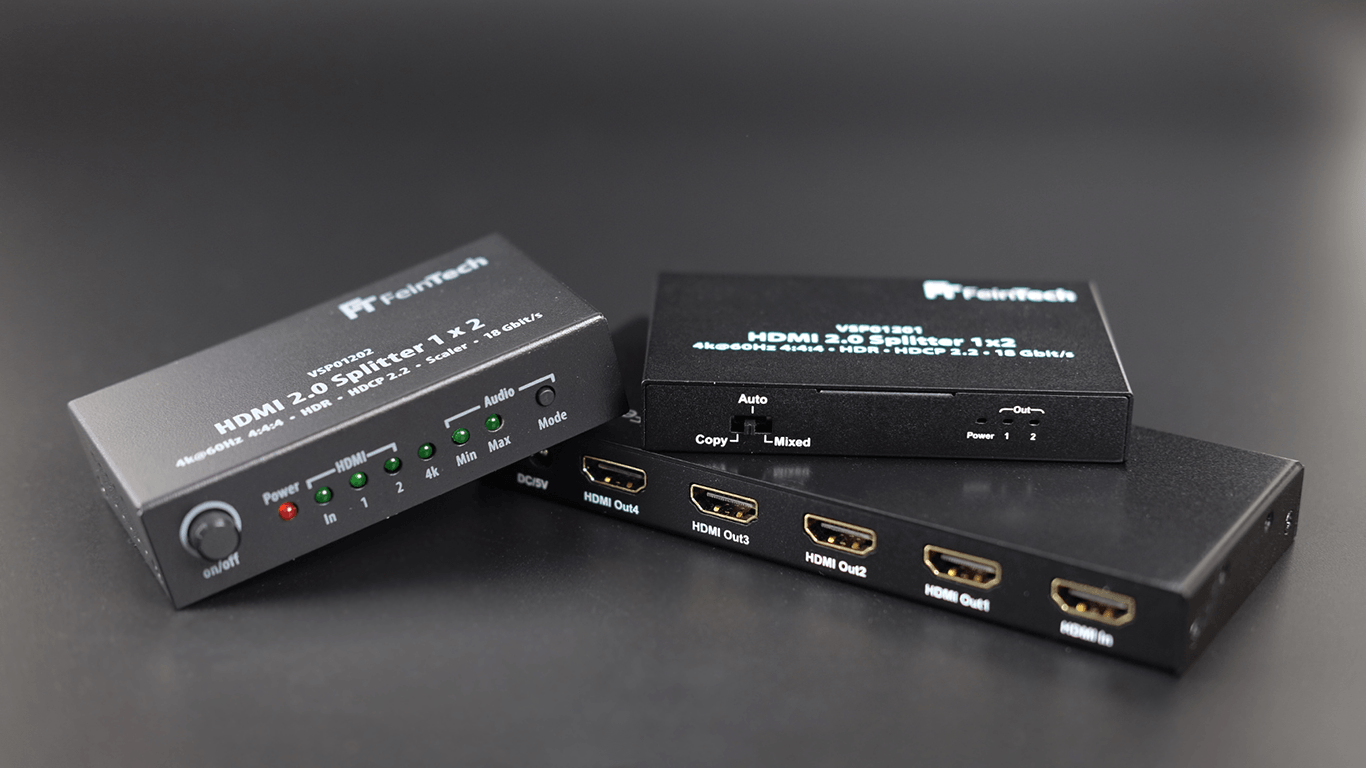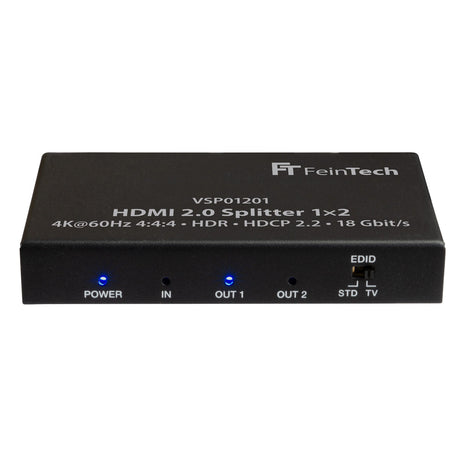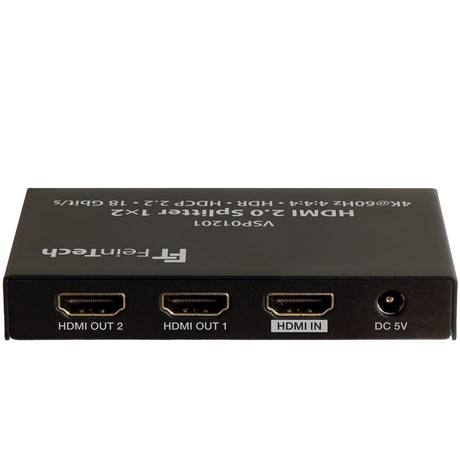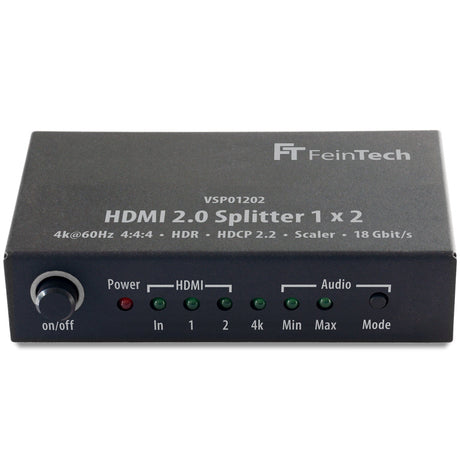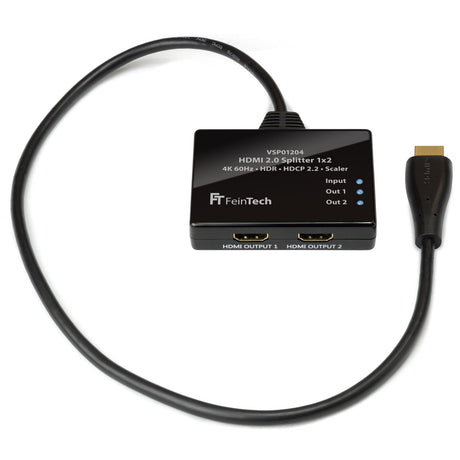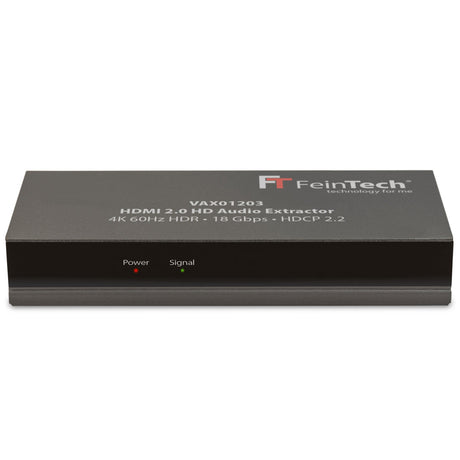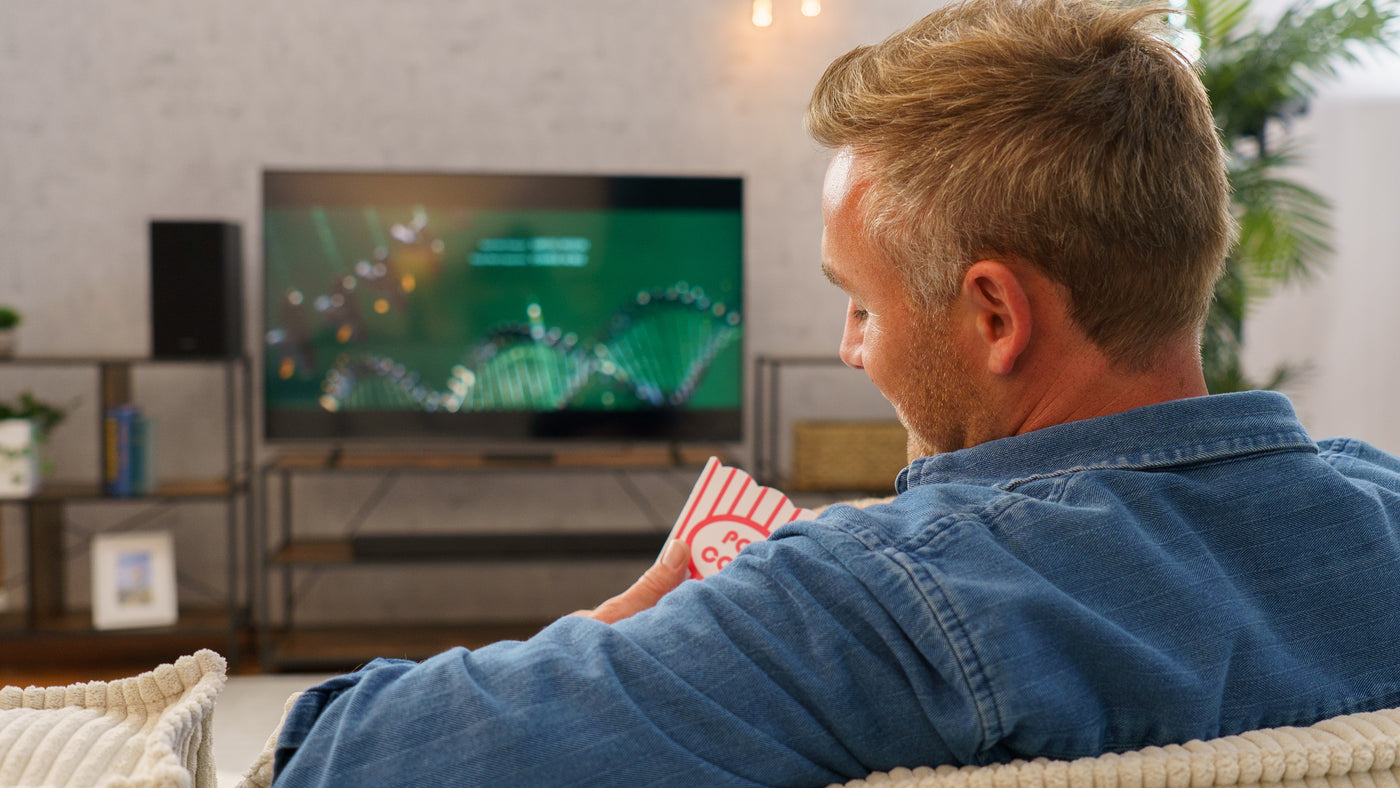We are often asked which HDMI splitter is "the best" and what the differences are. As you can probably imagine, there is no "best" one, but there is certainly a better fit. All HDMI splitters distribute the signal from a playback device to 2 or more end devices such as TVs and AVRs. A splitter with multiple signal inputs is called an HDMI matrix switch. The same applies to these devices. In addition to the fairly obvious differences such as connections, housing shape and controls, there are hidden features:
HDMI EDID management
When HDMI was developed, it was assumed that it one HDMI source (media player or similar) and one HDMI sink (display or AVR). HDMI EDID The sink signals which image and sound formats are supported and the source delivers the optimal signal. Plug and play – that's the theory.
If you want to connect 2 displays to one source using a splitter, the two EDID information must be combined. The source can only a EDID data set and only a output signal. If both displays are the same, there is no problem. However, if the devices differ in the possible image or sound format, the splitter must manage this.
And there are different approaches here. The following 3 modes simultaneously influence the EDID for audio and video signals:
COPY mode
In COPY mode, one of the connected HDMI sinks is prioritized. The player delivers exactly the same audio-video signal as when directly connected to this HDMI sink. Such a main device is usually the television. A second device receives exactly the same signal (unless a 4K signal is scaled to Full HD, see below). If, for example, the main device does not support DTS sound, DTS cannot be played. And if only the main device supports Dolby Digital sound, the second device remains silent for Dolby Digital films.
+ no restrictions on formats on the main device.
- Second device may have no picture or sound
MIXED mode (also called AUTO)
In this mode, the properties of the connected HDMI sinks are compared. This generates an EDID that is supported by all HDMI sinks, the best common denominator so to speak. This means that all devices receive a signal that they can reproduce. However, it is not the best possible signal in each case. If, for example, a video projector and a television are operated in MIXED mode, surround sound is probably no longer possible because one projector only supports stereo sound (or no sound at all).
+ provides a compatible signal for all devices
- limits the maximum audio and video formats
STD mode
This mode provides artificial EDID information, regardless of what HDMI sinks are actually connected. For example, the player is shown that 4K 60Hz SDR (video) and stereo (audio) are supported. These are also the maximum formats that can be selected on the player.
+ can force the output of audio-video formats
- can generate incompatible signals, requires manual settings on the player
Audio EDID
In addition to these 3 modes, there is the approach to manage the EDID specifically for audio:
- 2.0 forces stereo output
- 5.1 forces output in stereo or 5.1 bitstream (AC3 Dolby Digital or DTS)
- PASS enables all audio formats supported by the audio HDMI device
- MIN the best audio format supported by both sinks (and a jointly supported video format)
- MAX is the best supported audio format ( and a jointly supported video format)
VSP01201 HDMI splitter
The VSP01201 and the 4-way version VSP01401 have a slide switch for the EDID mode. This allows you to control which output or display is prioritized. This is ideal if, for example, you have a 4K HDR source and a 4K HDR display and a second one without HDR support. This way you can ensure that a 4K HDR image can always be displayed, even if the second device does not support it. If you want to watch a 4K film in Dolby Vision HDR, you should therefore switch off a full HD television. The VSP01201 is mainly used if you want to operate 2 displays.
- In copy mode, provides an optimal format for display 1, even if display 2 cannot display it correctly
- Ideal for connecting additional devices such as video grabbers, Ambilight converters and HDMI extenders
- Scales an Ultra-HD signal to 1080p for a Full-HD display 2
VSP01202 with audio EDID management
The VSP01202 only transmits HDR if both connected devices support HDR. This ensures that a perfect image is always output to both HDMI ports. The VSP01202 is therefore well suited if you want to watch on 2 displays at the same time. Or operate a TV with a soundbar and a video projector. About the audio Min/Max switch you set the EDID information for the sound format.
Min means: the best of both HDMI sinks supported format
Max means: the best format supported by one of the HDMI sinks (the second device may not be able to process the audio format)
Max is well suited if you have a sound system connected to your main device. Min if the devices are in 2 different rooms and both need sound.
- Ensures optimal audio format regardless of the display
- Scales an Ultra HD signal to 1080p for a Full HD display on the second output
VSP01204 with HDMI pigtail
The VSP01204 Splitter is ideal for connecting to 2 identical screens. The distributor has a short HDMI cable (also called a pigtail) at the input, so that the cabling is minimal. An external power supply is generally not required (but possible via USB). A format is always output that both screens can handle equally. Typical application: connection to 2 identical monitors, or an Ultra HD and a Full HD TV. (Note: It is not possible to display 2 different screens as an "extended desktop" from the PC with any splitter . This only works if the graphics card already has 2 outputs.)
- Provides the best possible output format for both displays
- Scales an Ultra HD signal to 1080p for a Full HD display 2
- Can be operated without power supply
VAX01203 for a surround system
We have the VAX01203 HDMI splitter specially designed for distribution to a 4k video projector (or monitor or TV) and a surround system. A full HD signal is always sent on the second HDMI output. Advantage: This also works with older sound systems that cannot process 4K signals. At the same time, the EDID switch can be used to select specific audio formats: 2.0 for stereo, 5.1 up to Dolby Digital Plus and 7.1 for Dolby TrueHd, Dolby Atmos, DTS-HD.
- Delivers optimal image for the display and maximum sound formats for the sound system via HDMI
- Ideal for connecting to a 4K projector / TV and a high-quality AV receiver (can also be older!)
- Bypasses audio limitations of the display and enables e.g. DTS sound on current TVs or Atmos with projectors
- Parallel output also possible via jack (stereo) and Toslink (up to 5.1)
Further differences
The VSP01201, VSP01202 and VSP01222 largely support HDMI-CEC on one output. This means you can, for example, control the basic functions of the media player with the TV remote control. However, please note that CEC is only activated on one TV in the HDMI chain. CEC does not allow more than that! If CEC is activated on 2 TVs, there may be interference.
The VSP01222 also has an HDMI-ARC pass , making it ideal for use on the output of an AV receiver, for example to operate a TV and projector. The ARC pass also allows the internal TV sound from apps or tuners to be played back by the AVR.
downscaler
All of our HDMI splitters support downscaling. When a 4k Ultra HD signal arrives, the splitter downscales it to 1080p for a connected Full HD display - without any significant loss of quality and without any time delay. The prerequisite for most HDMI sources is that at least one of the connected displays also supports 4K. If all displays support 4K, nothing is downscaled and they all display 4K.
Scaling is also the only change in the signal that the splitter can make. Otherwise, the splitter can only manage the EDID information so that the source outputs the desired signal and then distributes it. It would be desirable if every display received the best possible signal. Unfortunately, this is not technically possible. The HDMI source cannot, for example, output stereo sound and 5.1 sound at the same time. Nor can it output 4k Dolby Vision and Full HD SDR at the same time. Unfortunately, the additional technical restrictions of the respective interface generation (HDMI versions) make the issue complicated.
Special case Dolby Vision and video projector
Please note that Full HD devices display a downscaled 4K signal in SDR, HLG-HDR or HDR10 correctly. But if the output signal is in Dolby Vision or HDR10+ format, the colors are displayed completely incorrectly. There are hardly any video projectors that support Dolby Vision, but most current TVs can. In this case, you either have to manually switch off Dolby Vision on the player if you want to watch on the projector. Or, as a compromise, set the output permanently to HDR10. If you don't use internal TV apps and have all Dolby Vision content played externally, this can be quite annoying. Unfortunately, it is very time-consuming to have Dolby Vision calculated out of the signal. A normal splitter lacks the processing power for this.
3D video
Current televisions no longer support 3D video. If the output for such an Ultra HD television is prioritized, 3D is not possible on the second device. If 3D is to be watched on a Full HD display instead, this must be prioritized and operated in EDID COPY mode. Then 4K is no longer possible. A special firmware is available for the matrix switches VMS04201 and VMS04400 that enables 4K and 3D at the same time.
HDMI 2.1 splitter
Splitters for HDMI 2.1, which are used to transmit signals from the latest game consoles, present additional challenges if an HDMI 2.0 sink is also to be operated. It is possible to scale a 4K 120Hz signal for the second device so that it is output in Full HD 120Hz. Some HDMI 2.0 devices can still handle this (but many cannot). HDMI 2.1 is mainly of interest for gaming. And other HDMI 2.1 features such as VRR (variable frame rates) and ALLM are interesting, which HDMI 2.0 displays do not support. An HDMI 2.0 device would therefore slow down the new HDMI 2.1 features and mixed operation therefore does not make sense.
Note on soundbars
Unfortunately, it is poorly explained on many soundbars and seems illogical to many users: The HDMI-ARC or HDMI-eARC connection on a soundbar functions as an audio input, but is an HDMI output ! Therefore, no HDMI output of a splitter can be connected to it or operated. With an output-to-output connection, nothing is transmitted, only from output to input. Splitting the signal for this is only possible if the soundbar has one or more additional "real" HDMI inputs. ARC means audio return channel and the signal direction is the opposite of the normal path. Therefore, the HDMI-ARC connection on the soundbar is also connected to an HDMI input on the television.

